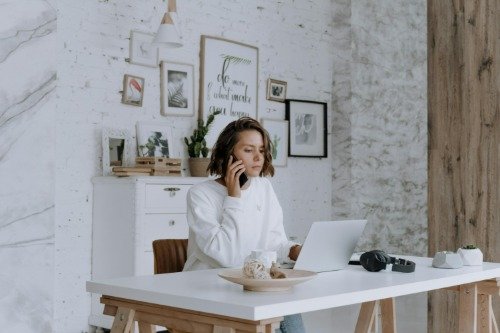There’s a quiet revolution happening in homes across America. People are choosing to own less, spend less, and focus on what truly matters. Maybe you’ve felt it too—that creeping exhaustion from cluttered closets, high credit card bills, and the pressure to keep up with the latest trends. If so, you’re not alone.
Minimalism isn’t just about decluttering—it’s about financial freedom, mental clarity, and creating a life that aligns with your values. Let’s explore how owning less can actually help you save more and live better.
The Cost of Too Much Stuff

We live in a culture that tells us more is better—bigger houses, fancier cars, the latest tech gadgets. But have you ever stopped to think about the real cost of all that stuff? It’s not just the price tag. It’s the stress, the maintenance, and the way it eats up your time and mental energy.
Let’s break it down:
- Buying More Means Spending More. The average American home has 300,000 items—from clothes to kitchen gadgets to random knick-knacks. Every one of those items cost money, and most of them weren’t essential. According to studies, the typical household spends over $18,000 a year on non-essential goods. That’s money that could go toward retirement, travel, or paying off debt.
- Storage Isn’t Free. Ever feel like you don’t have enough space? You’re not alone. One in ten Americans pays for a storage unit—essentially renting extra space for things they rarely use. On top of that, bigger homes mean higher mortgages, property taxes, and utility bills.
- Clutter Costs You Time. Whether it’s searching for your keys in a messy house or spending your Saturday cleaning instead of relaxing, clutter steals your time. And time, as they say, is money.
So, if we know that too much stuff drains our wallets and our energy, why do we keep buying? A lot of it comes down to habit, advertising, and emotional spending. But the good news? With a shift in mindset, you can take control of your spending and simplify your life.
How Owning Less Helps You Save More

Minimalism isn’t about living in an empty apartment with one chair and a single plate. It’s about being intentional with what you own and how you spend your money. Here’s how cutting back can actually help you save:
- You Buy with Purpose. When you shift to a minimalist mindset, you stop buying things on impulse. Instead of mindlessly scrolling through online sales or filling your cart at Target with things you don’t need, you start asking: “Do I really need this? Will it add value to my life?” This one habit alone can save you thousands of dollars a year.
- Less Stuff Means Fewer Expenses. Owning fewer clothes means less money spent on dry cleaning. Fewer gadgets mean lower maintenance costs. A smaller home means lower bills. The less you own, the less you have to spend maintaining and replacing things.
- You Focus on Quality Over Quantity. Minimalism doesn’t mean being cheap. It means investing in things that truly last. Instead of buying five pairs of poorly made shoes that fall apart in a year, you buy one high-quality pair that lasts for years. Over time, this approach saves you money.
- Experiences Over Things. Studies show that people who spend money on experiences rather than material goods are happier. A minimalist approach helps you shift your spending from “stuff” to things that actually bring joy—like travel, time with loved ones, and personal growth.
Financial freedom isn’t about having millions in the bank—it’s about using your money wisely so that you’re not trapped by debt or weighed down by unnecessary expenses. By embracing minimalism, you create space—not just in your home, but in your budget and your life.
Living Better with Less

So, what does life actually look like when you own less and spend more intentionally? It looks like freedom.
- Freedom from financial stress. Fewer monthly bills, no credit card debt, and more money in your savings account.
- Freedom to pursue what matters. Instead of working extra hours to afford things you don’t need, you have time to focus on hobbies, family, and travel.
- Freedom from comparison. When you stop chasing the latest trends, you stop worrying about what others have. You find contentment in what you already own.
Adopting a minimalist lifestyle doesn’t mean throwing everything away overnight. It starts with small, intentional steps.
- Declutter One Space at a Time. Start with your closet or a single room. Ask yourself: “Do I use this? Do I love it? Would I buy it again today?”
- Create a Budget That Aligns with Your Values. Spend money on what truly matters—whether that’s financial security, meaningful experiences, or personal growth.
- Adopt a One-In, One-Out Rule. If you buy something new, let go of something old. This helps prevent clutter from creeping back in.
- Practice Gratitude. The more you appreciate what you already have, the less you feel the need to buy more.
Minimalism isn’t about sacrifice—it’s about gaining more by owning less. More financial freedom, more time, more peace of mind.
So, if you’ve been feeling overwhelmed by clutter—both physical and financial—maybe it’s time to simplify. Cut out the excess, take control of your spending, and start living a life that’s lighter, richer, and more intentional.
Because at the end of the day, it’s not about how much stuff you own. It’s about how you live.
